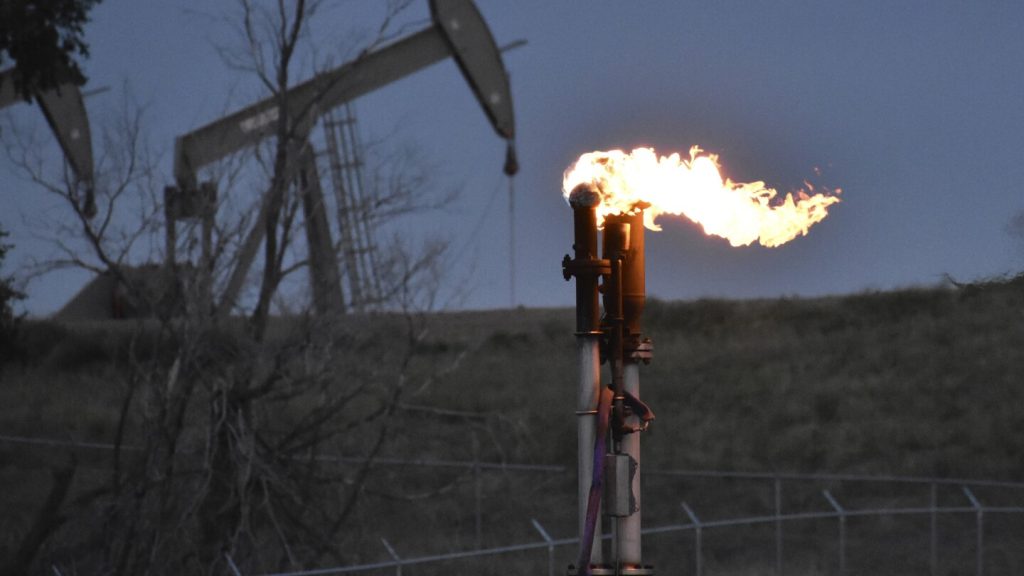The U.S. National Oceanic and Atmospheric Administration released a report stating that the levels of heat-trapping gases in the atmosphere reached historic highs in 2023. Carbon dioxide, the most abundant greenhouse gas caused by human activity, saw its levels rise by the third-highest amount in 65 years of record-keeping. Methane, another potent heat-trapping gas, also increased rapidly, jumping 5.5% over the past decade. The 2.8 parts per million increase in carbon dioxide levels was the largest since 1959, reaching an average level of 419.3 parts per million in 2023, up 50% from pre-industrial times.
In 2023, methane levels increased by 11.1 parts per billion, which was lower than the record annual rises in the previous years. Methane has risen 3% in the past five years and 160% from pre-industrial levels, showing a faster rate of increase than carbon dioxide. Methane emissions come from various sources such as natural wetlands, agriculture, livestock, landfills, and leaks in the oil and gas industry. Methane traps about 28 times the heat of carbon dioxide per molecule, but lasts for a shorter duration in the atmosphere.
Nitrous oxide, another human-caused greenhouse gas, also reached record levels in 2023, jumping 1 part per billion. This gas, which lasts for about a century in the atmosphere, comes from sources like agriculture, fuel burning, manure, and industrial processes. Despite efforts to reduce greenhouse gas emissions, NOAA’s Global Monitoring Laboratory Director Vanda Grubisic highlighted the need for more work to make meaningful progress in lowering the amount of these gases accumulating in the atmosphere. The EPA issued a final rule to reduce methane emissions from the oil and gas industry, and companies globally pledged significant cuts in methane emissions.
Recent studies have shown that methane levels have been rising faster than any other time in NOAA’s record-keeping history. The increased methane emissions are mostly attributed to microbes, indicating spikes from wetlands, agriculture, and landfills, rather than the energy industry. While there are concerns about methane emissions, scientists like Xin “Lindsay” Lan are more worried about carbon dioxide emissions. The shift from a La Nina to an El Nino in 2023 played a role in dampening methane’s increase in the air and spiking carbon dioxide levels. Carbon dioxide levels tend to rise higher during hotter El Ninos, but the current one is starting to decrease. Despite efforts to reduce emissions, more work is needed to combat the rising levels of greenhouse gases in the atmosphere.


